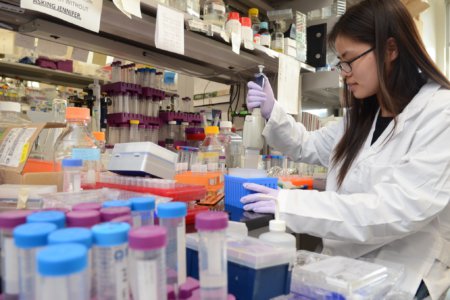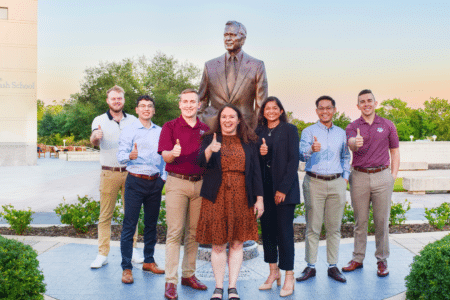A good architect creates spaces that serve practical purposes, but a great architect shapes environments that improve the quality of life and address pressing global challenges. Texas A&M University, specifically its College of Architecture, is known for producing the latter. This division, which houses programmes in architecture, construction science, landscape architecture and urban planning, is all about leveraging evidence-based design to create places that are measurably better — think walkable communities, health facilities that accelerate patient recovery, and energy-efficient buildings.
To fuel its mission, it immerses learners in a comprehensive education that covers the entire life cycle of site development, planning, design, and construction, ensuring they are well-equipped to tackle modern society’s greatest challenges.
Rui Zhu from China, a PhD candidate in Urban and Regional Science, has excelled in her programme’s well-rounded curriculum, which includes theory classes on neighbourhood revitalisation, practical software courses such as GIS, and research-focused subjects. “The programme’s emphasis on global perspectives has allowed me to incorporate international best practices into my work, preparing me to contribute effectively to urban development worldwide,” she says.
The school is the perfect place for those with aspirations like Zhu’s, especially since its research strengths lie in health and safety, resilience and sustainability, and technology-assisted “smart” communities. Several specialised labs and centres drive innovation and practical solutions to real-world challenges.
The Hazard Reduction and Recovery Centre, directed by Dr. Michelle Meyer, specialises in hazard mitigation and recovery. At the Centre for Geospatial Sciences, Applications, and Technology (GeoSAT), Dr. Xinyue Ye and his team utilise generative AI and geospatial technology to develop innovative design and planning solutions. The Centre for Health Systems Design, under the leadership of Dr. Ray Pentecost, examines the relationship between facility design and patient outcomes by focusing on how environments impact stress, health, and well-being.

The School of Architecture covers the entire life cycle of site development. Source: Texas A&M University
The Safety Innovation Integration Research Lab (SIIR-Lab), directed by Dr. Chuma Nnaji, applies technology and computational models to improve construction health, safety, and automation. Its recent achievements include the development of fatigue monitoring and prediction models, safety risk mitigation resources for human-robot interactions, a passive exoskeleton, and a virtual reality platform designed to enhance students’ computational thinking skills. Of course, the lab provides numerous experiential learning opportunities to involve students in all phases of research.
“For example, advanced students, such as PhD candidates, may assist in developing proposals, while newer graduate students support project execution,” explains Dr. Nnaji. “Typically, I pair an MS or undergraduate student with a PhD student on most funded projects, allowing them to learn from both me and the PhD student. For some short-term projects, I permit an MS student to lead the project independently.”
Recently, one of Dr. Nnaji’s MS students led a project that successfully became his thesis. His research even contributed to a journal publication before he secured a position at Jacobs. He’s one of the 70% of School of Architecture graduates to have left Texas A&M University with a job offer.
Such outcomes are typical of students immersed in research-intensive environments home to hands-on master’s programmes — especially the kind that incorporate the latest materials and technology into practical design and building solutions. Master’s students pursuing professional degrees in the College of Architecture may also gain hands-on experience as interns with firms and industry partners, so they are poised to find full-time positions and prepared for licensure/certification upon graduation.

Students here get the benefits of a large, R1 research university, but at a more affordable price. Source: Texas A&M University
At the master’s level, the college offers programmes such as the Master of Architecture (professional programme accredited by the National Architectural Accrediting Board), Master of Science in Architecture, Master of Science in Construction Management (accredited by the American Council for Construction Education), Master of Land & Property Development (with a 99% placement rate), Master of Urban Planning (professional programme accredited by the Planning Accreditation Board), and the Master of Landscape Architecture (professional programme recognised by the Landscape Architectural Accreditation Board).
For students who want to pursue research or academic careers, the college offers doctoral programmes in Architecture, Construction Science, and Urban and Regional Sciences.
This breadth provides students with unparalleled opportunities for interdisciplinary education and research. After all, modern challenges in the built environment are complex, often requiring interdisciplinary teams to create safer, healthier, more resilient, and smarter environments for people to work, live, learn, and play.
Graduate students can even broaden their expertise and address diverse challenges by pursuing a graduate certificate in Environmental Hazard Management, Facility Asset Management, Health Systems & Design, Historic Preservation, Sustainable Urbanism, or Transportation Planning.
All lessons are delivered from the safe, affordable city of College Station, which is only 100 miles away from the vibrant cities of Austin and Houston. This proximity provides students with ample opportunities for professional networking and cultural experiences while still enjoying the benefits of a cost-effective living environment.
Texas A&M University’s emphasis on affordability elevates accessibility. At this R1 research university, students who receive competitive scholarships valued at US$1,000 or more automatically qualify for residential tuition rates, resulting in savings of approximately US$14,000 per year. This financial advantage is particularly significant for international students, which explains why the university’s student body, known as “Aggies,” currently represents over 50 nationalities.
Upon graduating, they immediately join the Aggie Network, one of the largest and most active graduate associations globally. Apart from providing alumni with a robust support system, it fosters professional connections and friendships sure to last a lifetime.
If you share an interest in using research and design best practices to make places better – healthier, smarter, more resilient – join us at the College of Architecture. Applications for the fall 2025 intake open in August 2024.
Follow the College of Architecture at Texas A&M University on Facebook, Instagram, X, and YouTube












